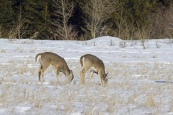Uses for Christmas Trees in the Garden
go.ncsu.edu/readext?838559
en Español / em Português
El inglés es el idioma de control de esta página. En la medida en que haya algún conflicto entre la traducción al inglés y la traducción, el inglés prevalece.
Al hacer clic en el enlace de traducción se activa un servicio de traducción gratuito para convertir la página al español. Al igual que con cualquier traducción por Internet, la conversión no es sensible al contexto y puede que no traduzca el texto en su significado original. NC State Extension no garantiza la exactitud del texto traducido. Por favor, tenga en cuenta que algunas aplicaciones y/o servicios pueden no funcionar como se espera cuando se traducen.
Português
Inglês é o idioma de controle desta página. Na medida que haja algum conflito entre o texto original em Inglês e a tradução, o Inglês prevalece.
Ao clicar no link de tradução, um serviço gratuito de tradução será ativado para converter a página para o Português. Como em qualquer tradução pela internet, a conversão não é sensivel ao contexto e pode não ocorrer a tradução para o significado orginal. O serviço de Extensão da Carolina do Norte (NC State Extension) não garante a exatidão do texto traduzido. Por favor, observe que algumas funções ou serviços podem não funcionar como esperado após a tradução.
English
English is the controlling language of this page. To the extent there is any conflict between the English text and the translation, English controls.
Clicking on the translation link activates a free translation service to convert the page to Spanish. As with any Internet translation, the conversion is not context-sensitive and may not translate the text to its original meaning. NC State Extension does not guarantee the accuracy of the translated text. Please note that some applications and/or services may not function as expected when translated.
Collapse ▲It’s starting to feel a bit like spring. There are still glints from frost crystals in the morning sunrise, but temperatures during the day out feel like spring has almost sprung. Not quite yet, but enough to warm the hope in a gardener’s heart. Soon little tender shoots will emerge. The deer know it too. Deer eat a variety of hard mast (e.g., acorns, beech nuts), soft mast (e.g., blackberry, blueberry), forbs, tender parts of woody plants, fungi, and agricultural crops. In fall and winter, the high priority deer foods are hard and soft mast, especially acorns, along with woody evergreen plants, herbaceous vegetation, and fungi.
In the spring and summer, deer eat tender woody browse, a diverse array of forbs, and soft mast as it becomes available throughout the season. Adult deer require 6 to 8 pounds of green food per 100 pounds of body mass daily.
As so the battle begins.
If your family enjoyed a live Christmas tree this year, and haven’t disposed of it yet, then put it too good use. Who said procrastination was always a bad thing? This year, it’s being environmentally efficient. Repurpose, reuse and recycle.
We can get another use from that not -so-fresh, fresh Christmas tree even before  it’s assigned to the compost pile. Cutting the boughs and arranging them like a protective cone around tender shrubs and perennials can upcycle your recycle. This approach, combined with applying deer repellant if you are staying on top of your battle plan, can be a useful tool in your IPM (Integrated Pest Management) strategy toolbox.
it’s assigned to the compost pile. Cutting the boughs and arranging them like a protective cone around tender shrubs and perennials can upcycle your recycle. This approach, combined with applying deer repellant if you are staying on top of your battle plan, can be a useful tool in your IPM (Integrated Pest Management) strategy toolbox.
Frasier firs, and white pines can be an unappetizing prickly mouthful, whereas some of our garden ornamentals’ new growth looks like a salad buffet, especially leafy or evergreen perennials like Coral Bells (Heuchera sp.). Just be sure to remove the protective cone of branches when the plants beneath really get going and are reaching for the sunlight.
Another use for that Christmas tree or other holiday greenery after all the ornaments and decorations are removed and packed away is to provide cover for winter birds. If you just can’t shake to need to decorate the greenery, wildlife treats formed with suet, birdseeds and sometimes peanut butter pressed into pinecones are a treasure trove for hungry birds and other small wildlife. A fun craft for the kiddos and another way to repurpose and recycle. Just make sure the treasures are out of reach of Fido the family dog and Felix the family feline.
The final option – chipping or grinding for mulching around the flower, trees and shrub beds. If the city of Sanford, NC normally collects your yard waste, they can take Christmas trees that have been stripped of decorations (and any nails used to secure the tree in the stand) as well. Call the City of Sanford for information on tree collection after the holdiays.
Minda Daughtry is the Horticulture Agent for North Carolina Cooperative Extension in Lee County.




